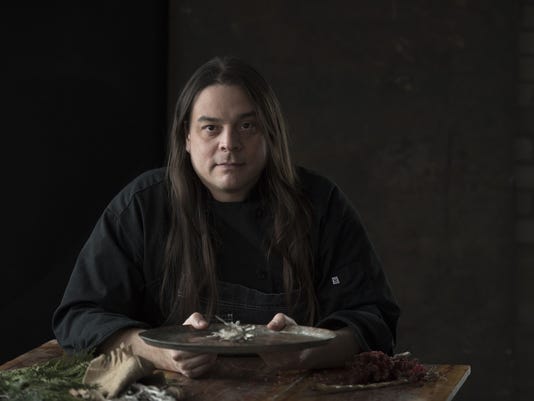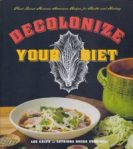by Jake Laxen ( jlaxen@stcloudtimes.com )

Sean Sherman is on a quest to preserve his heritage.
The Minneapolis chef is bringing indigenous recipes back into the modern world. And Sherman, who grew up on a ranch in South Dakota’s Pine Ridge Reservation, is hoping to resurrect the lost Native American food culture in the process.
“Natives are identifying with fry bread more than they are with wild indigenous food,” said Sherman, an accomplished chef who also previously worked as a surveyor for the U.S. Forest Service.
“Native American history hasn’t been the prettiest picture. A lot of communities were taken off their traditional food source at the turn of the century. They were given government commodities and subsidies to live off. It really took a hit on the cultures across the board.”
While Sherman’s heritage lies within the Lakota tribe, he’s now cleverly titled The Sioux Chef, a play on the French term for an assistant chef — sous chef.
He launched a catering service in September and offers educational demonstrations. Sherman is also in the process of writing a cookbook, opening a family-style Minneapolis restaurant and starting a Twin Cities food truck called the Tatanka Truck — Tatanka is Native American for buffalo.
“The feedback has been really incredible,” said Sherman, who has done more than 50 interviews. “There’s been such a positive response. It’s great that people are so interested.”
Sherman said it’s been a challenge to remove European cooking influences. There’s little modern precedent for Native American cooking.
He specifically studied wild foods, and Native American farming and preservation methods.
“I’m sure it will be a lifelong process of continuing to learn throughout this whole project,” said Sherman, who got his first restaurant job at age 13.
Sherman bases his menus on the traditions of the Dakota and Ojibwe — Minnesota’s two largest tribes — but eventually plans to explore other tribes around the country.
While he often puts a modern twist on the dishes, he refuses to cook with dairy products or refined sugars. As a throwback to old preservation techniques, he dries some products.
“For this region in particular with the heavy winters, they were really building the food systems throughout the whole year,” Sherman said. “They needed food cash to draw on all winter.”
Common proteins Sherman uses include lake fish, buffalo, bison, elk, wild turkeys, duck, deer and rabbit. Other regular ingredients include wild rice, maple syrup, corn, squash, beans and a variety of berries.
“Naturally, it’s a very healthy diet — high in fiber, and low in fat and salt,” Sherman said.
Sherman has long worked with local farms in his culinary career. He hopes with The Sioux Chef to “open up an economic portal for native food producers.” He works with wild rice farms and a Red Lake fishery that raises northern, walleyes and white fish.
And Sherman hopes his work helps revive Native American food culture.
“It’s hard to say why there aren’t many Native American restaurants,” Sherman said. “Native communities are still struggling and recovering from reservation life. The timing is just right now.”
Source: SC Times, May 19 2015













